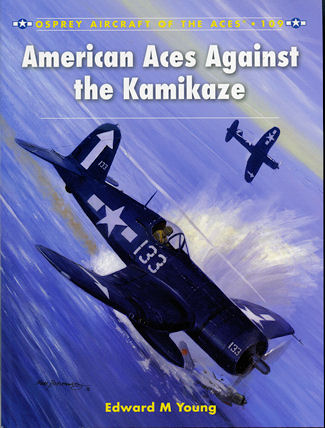 The post
WWII Strategic Survey assessment of the effectiveness of air power stated that
the most effective weapon that the Japanese had against the US Navy was not the
battleship or even the aircraft carrier, but the kamikaze. What you had here was
something relatively unknown in Western warfare; the willingness to give one's
life for the good of the nation through self-sacrifice. In this case, it was the
use of the piloted bomb.
The post
WWII Strategic Survey assessment of the effectiveness of air power stated that
the most effective weapon that the Japanese had against the US Navy was not the
battleship or even the aircraft carrier, but the kamikaze. What you had here was
something relatively unknown in Western warfare; the willingness to give one's
life for the good of the nation through self-sacrifice. In this case, it was the
use of the piloted bomb.
By the time of the Philippines campaign, it was pretty
obvious that the US was going to be unstoppable by standard means. Though
initially taken out of consideration as a means of warfare, by mid 1944, it was
looking more and more like a viable option. So the plan was put into motion to
use volunteer pilots and their aircraft to purposely crash themselves into the
most potent weapon the USN had against Japan, the aircraft carrier. It was felt
that if the US carrier force could be decimated, it would postpone or perhaps
prevent the invasion of the Japanese home islands. With the speed at which new
aircraft carriers of all sizes were being built, this was not likely to happen,
but when your back is against the wall, you think differently.
The kamikaze effort was one of the few times that the
Japanese Army and Navy actually cooperated with each other. Each service raised
awareness and called for volunteers. They also coordinated their attacks. What
started out rather small in the beginnings in the Philippines, grew into a much
large series of raids when Okinawa was invaded. It was Okinawa where the battle
was the most intense. By this time, the Japanese learned that small raids
accomplished little and that it required a mass of aircraft to allow some to get
through. The US also learned that it was important to have advanced warning of
these raids, so destroyers were set out from the reat of the fleet and
transports to provide this early warning. It was these ships that bore a great
deal of the destruction and many were sunk as a result.
These events also provided the US Navy fighter pilot
with a target rich environment. Thanks in part to the low level of training of
many Japanese pilots and the fact that many of these suicide planes were old and
slow, there were a considerable number of aces made. Especially during the
Okinawa campaign where it was not unusual for a pilot to be an 'ace in a day'
and score nothing the rest of the war. Of course, these suicide attacks were
always provided with friendly fighter escort, but many of those pilots also met
their end during the operation.
In this book, author Edward M Young looks at the
strategic situation during this time along with the consideration of using
suicide attacks through the acceptance of the idea and the planning that was
undertaken. The actual battles are broken down into the Philippines and later
Okinawa campaign. For the latter, each of the massed suicide attacks is covered
in some detail. In between, the US attacked those places where these units were
formed to destroy the planes on the ground so they would not have the chance to
be used in attacks.
This was not totally a USN show as some USAAF and a few
USMC units were also involved, but for the most part, it was Corsairs and
Hellcats though some FM-2 Wildcat pilots were among those who did well. Even the
night fighter gang got into the act and that is covered as well.
It all makes for a very interesting read that at times,
reminded this reviewer of lambs being led to the slaughter as so many of the
victories were so easy. As usual, there are superb period photos of the pilots
and planes involved as well as many pages of nicely done color profiles. It is a
book that I know you will enjoy reading and one that covers a subject that
always draws interest.
November 2012
For more on the complete line of Osprey books,
visit www.ospreypublishing.com. In the US, it is
Osprey Direct at 44-02 23rd St, Suite 219, Long Island City, NY 11101., where you can
get a catalogue of available books.
If you would like your product reviewed fairly and quickly, please
contact
me or see other details in the
Note to
Contributors.
 The post
WWII Strategic Survey assessment of the effectiveness of air power stated that
the most effective weapon that the Japanese had against the US Navy was not the
battleship or even the aircraft carrier, but the kamikaze. What you had here was
something relatively unknown in Western warfare; the willingness to give one's
life for the good of the nation through self-sacrifice. In this case, it was the
use of the piloted bomb.
The post
WWII Strategic Survey assessment of the effectiveness of air power stated that
the most effective weapon that the Japanese had against the US Navy was not the
battleship or even the aircraft carrier, but the kamikaze. What you had here was
something relatively unknown in Western warfare; the willingness to give one's
life for the good of the nation through self-sacrifice. In this case, it was the
use of the piloted bomb.